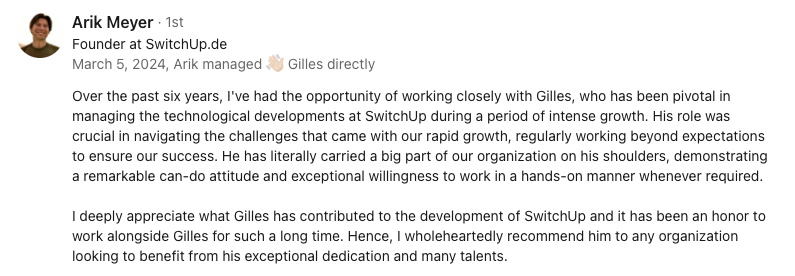Abstract:
The integration of autonomous vehicles into fleet management systems offers enhanced operational efficiency, cost reduction, and improved safety. This technology, driven by AI and machine learning, enables data-driven decision-making for technology and engineering directors. Efficient coordination and control of autonomous vehicles are vital for optimal fleet performance, minimizing delays, reducing fuel consumption, and allowing real-time adjustments. Embracing this emerging trend is crucial for technology leaders, who can leverage their expertise to drive innovation and maintain a competitive edge in the evolving landscape.
Introduction to autonomous vehicle fleet management
Have you ever watched those old science fiction movies where cars drove themselves while their passengers relaxed, sipping coffee or reading a book? Well, guess what – we're living it! We might not have flying cars yet, but autonomous vehicles are already on the roads, transforming how we manage fleets. If you're wondering why this is such a big deal, let me break it down from my perspective as a Chief Technology Officer.
First off, autonomous vehicles promise to revolutionize operational efficiency. Imagine a fleet that operates around the clock without a single lunch break or sneaky nap. These vehicles are driven by sophisticated AI and machine learning algorithms, allowing them to optimize routes in real-time. They avoid traffic jams, conserve fuel, and ensure timely deliveries – even robots hate being late.
Speaking of AI, it's like the fairy godmother of fleet management, only a lot cooler. By processing vast amounts of data, autonomous vehicles can learn and adapt instantly. Think of the reduction in human error; fewer fender benders and wayward packages! This tech doesn't just meet expectations – it exceeds them, ensuring safety and reliability.
Then there's the matter of cost reduction. Sure, the initial investment might make your accountant sweat a bit, but the long-term savings are significant. No more salaries for drivers, lesser fuel consumption, fewer accidents, and reduced maintenance costs – the ROI is compelling. Your fleet will practically sweat money-saving virtue.
Safety improvements are another crucial benefit. Autonomous vehicles adhere to traffic laws better than any human driver ever could. They don't speed, get distracted, or drive sleepy. By integrating real-time sensors and predictive analytics, these vehicles can foresee and react to potential hazards faster than you can say "watch out!" This dramatically reduces accidents, injuries, and liability costs.
So, why is autonomous vehicle fleet management a game-changer? Because it combines efficiency, cost savings, and enhanced safety into a slick, futuristic package. It's not just about getting from point A to point B anymore – it's about doing so smarter, safer, and cheaper. Buckle up, because we're just getting started on this exciting road!
Technological backbone: AI and machine learning
Now, let's talk about the real engine under the hood of autonomous vehicle fleet management: artificial intelligence (AI) and machine learning (ML). These are the tech equivalents of having Einstein and Tesla as your co-pilots, constantly learning and refining your fleet's operations. From optimizing routes to predicting maintenance needs, AI and ML are the cornerstones that enable fleets to operate at peak efficiency.
AI-driven decisions
Imagine you're managing an enormous fleet of autonomous vehicles – it sounds daunting, doesn't it? But with AI, it’s like having a team of super-efficient, tireless brainiacs working round the clock. AI helps in making data-driven decisions that are more accurate and quicker than any human could manage. It processes mountains of data in real-time to optimize routes, reducing fuel consumption and ensuring punctual deliveries. It's like having your very own traffic wizard.
Learning and evolving
Machine learning kicks things up a notch. These systems are not only smart, but they also get smarter over time. By continuously learning from historical data and current operations, ML algorithms can predict traffic patterns, vehicle breakdowns, and even driver behavior. For example, if one route consistently faces traffic jams at a specific time, the system adapts, suggesting alternative paths. It's like having a crystal ball but with fewer mystical vibes and more solid data crunching.
Key roles: technology directors and engineers
Let’s not forget the unsung heroes behind this tech marvel – the technology directors and engineers. These are the people who turn concepts into reality. They implement AI and ML solutions, monitor their performance, and make adjustments to fine-tune operations. Their expertise ensures that the fleet runs smoothly, efficiently, and safely. Engineers also work on integrating various systems, like sensors and cameras, to provide real-time data, making autonomous vehicles more aware and responsive. Think of them as the tech wizards behind the curtain, constantly upgrading the magic show.
Case studies: success stories
If you're still skeptical, let's look at some real-world applications. Take the example of Waymo, Google's self-driving car project. Waymo's fleet has driven millions of miles on public roads, and the data gathered has been instrumental in refining their AI algorithms. The result? A more efficient, safer fleet that’s always improving. Another noteworthy case is Tesla's Autopilot system, which uses a mix of cameras, radar, and ultrasonic sensors to navigate traffic. Tesla's continuous software updates ensure that the system learns and adapts, enhancing vehicle performance and safety. These examples highlight the transformative power of AI and ML in fleet management.
So, there you have it. AI and ML are not just buzzwords; they are the technological backbone that makes autonomous vehicle fleets a practical, efficient reality. Whether it's making split-second decisions or learning from past experiences, these technologies are enabling fleets to perform at their best. And trust me, as someone who's been in the trenches, I can’t overstate how exhilarating it is to see this technology in action. It’s like watching a well-oiled machine – only smarter.
Operational efficiency and real-time adjustments
Alright, now, let’s roll up our sleeves and dive into the nuts and bolts of how autonomous vehicle technology can turbocharge fleet efficiency. Picture this: countless autonomous vehicles zipping around, each one coordinating seamlessly like a synchronized dance. Efficient coordination and control are crucial for pulling off this technological marvel, and at the heart of it all is real-time adjustment.
Importance of efficient coordination
Effective fleet management boils down to getting the right vehicle to the right place at the right time, without wasting resources. Here’s where the magic of AI and real-time data processing comes into play. With autonomous vehicles, you can expect impeccable coordination. These smart vehicles can communicate with each other and a central control system, enabling optimal route planning, minimizing traffic-related delays, and reducing fuel consumption. This coordination isn’t just about sending out vehicles; it’s more like conducting an orchestra, ensuring every part plays in harmony.
Real-time adjustments
Ever been stuck in traffic during a critical delivery? Annoying, right? Thanks to AI-driven real-time adjustments, autonomous fleets can avoid such situations. By analyzing live traffic data, weather conditions, and even road construction updates, these vehicles can make on-the-fly adjustments to their routes. This ability to adapt instantaneously cuts down on idle time, conserves fuel, and ensures timely deliveries. Think of it as having a hyper-logical co-pilot always looking out for the best path forward.
Practical scenarios
Let’s talk scenarios. Imagine a fleet of autonomous delivery trucks during the holiday rush. Normally, this period is a logistics nightmare – traffic jams, delayed deliveries, and operational chaos. But with real-time adjustments, the fleet can navigate even the busiest streets with finesse. By rerouting vehicles away from congested areas, the system ensures deliveries arrive on time, every time. And it's not just about avoiding traffic; these adjustments also mean fewer emissions and happier customers. A win-win!
Another scenario: autonomous taxis in a bustling city. By leveraging real-time data, these vehicles can position themselves at high-demand areas even before requests pour in, drastically cutting down on wait times. Impeccable service quality and satisfied passengers become the norm rather than the exception.
Enhanced service quality and customer satisfaction
So, how do these capabilities translate to better service quality and customer satisfaction? It’s simple. Efficient coordination means fewer delays, more reliable service, and consequently, happier customers. For instance, last-mile delivery companies can guarantee next-day or even same-day deliveries with far greater confidence. Autonomous vehicle fleets ensure that commitments are met, leading to enhanced trust and repeat business.
The bottom line is that real-time adjustments powered by AI are game-changers in fleet management. They offer a level of responsiveness and efficiency that traditional methods simply can’t match. By harnessing these technologies, we're not just getting vehicles from point A to point B; we're doing it smarter, faster, and more efficiently than ever before. And let’s face it, impressing customers while saving on operational costs is a pretty sweet deal. Now that's what I call a smart move!
Strategic leadership and competitive advantage
As a Chief Technology Officer (CTO), I've seen firsthand how crucial it is for senior management to embrace emerging technologies like autonomous vehicle fleet management to maintain a competitive edge. Let's talk about why being a tech-savvy leader isn't just a feather in your cap but a necessity in our industry.
Embracing emerging trends
The tech world waits for no one. Autonomous vehicle technology is rapidly advancing, and staying ahead of the curve can make the difference between leading the pack and struggling to keep up. Integrating these advancements isn't just about having the latest gadgets; it's about driving innovation. AI and machine learning aren’t just shiny objects – they’re tools that can redefine efficiency and service quality. As a CTO, it's my job to ensure we don’t just follow trends but lead in implementing them strategically.
The role of senior management
Leadership isn’t just about making decisions; it’s about future-proofing the organization. Senior management must prioritize investment in autonomous vehicle technology to unlock its full potential. This involves more than just signing off on budget allocations. It means fostering a culture that values continuous learning and adaptation. Encourage your teams to experiment, fail fast, and iterate. Risk-taking, informed by data, can lead to breakthroughs that set your fleet miles ahead of competitors.
Maintaining competitive edge
Technology evolves, and so must our strategies. By leveraging autonomous fleets, companies can achieve unmatched operational efficiency, reduce costs, and provide superior service. Imagine offering delivery times and reliability that your competitors can only dream of. In crowded markets, these advantages translate to customer loyalty and better bottom lines. Every CEO loves hearing that, right?
Here’s a practical take: look at companies like Waymo and Tesla. Their commitment to autonomous technologies isn’t just about the tech; it’s about possessing that 'X factor' which keeps them ahead of the competition. They aren’t just players in the game; they’re redefining the rules.
Looking ahead
Autonomous vehicles are not a distant future but an unfolding present. As leaders, we must steer our organizations toward adopting these technologies to avoid being left behind. One expert put it nicely: “AI in fleet management will soon be less of an advantage and more of a requirement.” Seize the chance now. The road to the future is paved with innovation, and pioneering autonomous vehicle technology could just be your golden ticket.
So, here’s my final thought: embracing autonomous vehicle fleet management today will distinguish tomorrow's industry leaders from the followers. Let's drive forward into an automated, efficient, and astonishingly exciting future.
You might be interested by these articles:
- Self-Driving Cars Revolution
- Navigating the Future with Autonomous Vehicles
- Building Trust in Europe's Autonomous Vehicle Future





